- 路 Microwave
- 路 Atmospheric Pressure Microwave 路 Pressure Microwave 路 Parallel Microwave
- 路 Ultrasonic 路Low Temperature Ultrasound
- 路 Ultraviolet Light
- 路 Microwave Heating 路 Atmospheric Pressure Synthesis 路 Atmospheric Pressure Catalysis 路 Atmospheric Pressure Extraction
- 路 Sample Preparation 路 Microwave Digestion
- 路 Soil Digestion 路 High Pressure Synthesis
- 路 Solid Phase Synthesis
- 路 Organic Synthesis
- 路 Ionic Liquid Synthesis
- 路 Degradation Of Natural Organic Matter
- 路 Natural Product Extraction / Purification
河北祥鹄科学仪器有限公司
150 Green synthesis of silver nanoparticles in xylan solution via Tollens reaction and their detection for Hg2+
This paper, written by researchers from South China University of Technology and others, discusses Green synthesis of silver nanoparticles in xylan solution via Tollens reaction and their detection for Hg2+. The paper is published in an important journal < Nanoscale >. IF:7.233.
In recent years, the research work of microwave chemical instrument used in the synthesis of materials has become a hot direction of scientific research, which has been paid great attention to by many scholars!
This work reported a facile and green method to prepare highly stable and uniformly distributed Ag nanoparticles (AgNPs), in which a biopolymer xylan was used as the stabilizing and reducing agent via the Tollens reaction under microwave irradiation. Different variables were evaluated to optimize the reaction conditions. Complete characterization was performed using UV-Vis, XRD, TEM, size distribution analysis and XPS. The results revealed that AgNPs were well dispersed with diameters of 20–35 nm due to the packing of xylan. The optimal conditions were as follows: microwave irradiation temperature was 60–70 °C, microwave power was 800 W, microwave time was 30 min, the ratio of xylan to AgNO3 was 50 mg: 0.13 mmol, and ammonia concentration was 2%. In addition, the AgNPs were collected via highspeed centrifugal separation, and the supernatant was tested by HPAEC, GPC, FT-IR, and NMR. By comparing the structure of xylan before and after the reaction, the reaction mechanism was discussed. It was noted that the xylan-AgNPs composites showed high selectivity and sensitivity for Hg2+ detection. The other 15 metal ions used had no obvious effect on the detection of Hg2+, and the limit of detection (LOD) was 4.6 nM, which is lower than the allowed maximum level of 30 nM for drinking water by WHO. In addition, the xylan-AgNPs composites can be applied for Hg2+ detection in real water samples. This study provides a novel way for the high-value utilization of a rich biomass resource, and a green method for the synthesis of AgNPs for the selective and sensitive detection of harmful heavy metals.

Fig.1/4↑
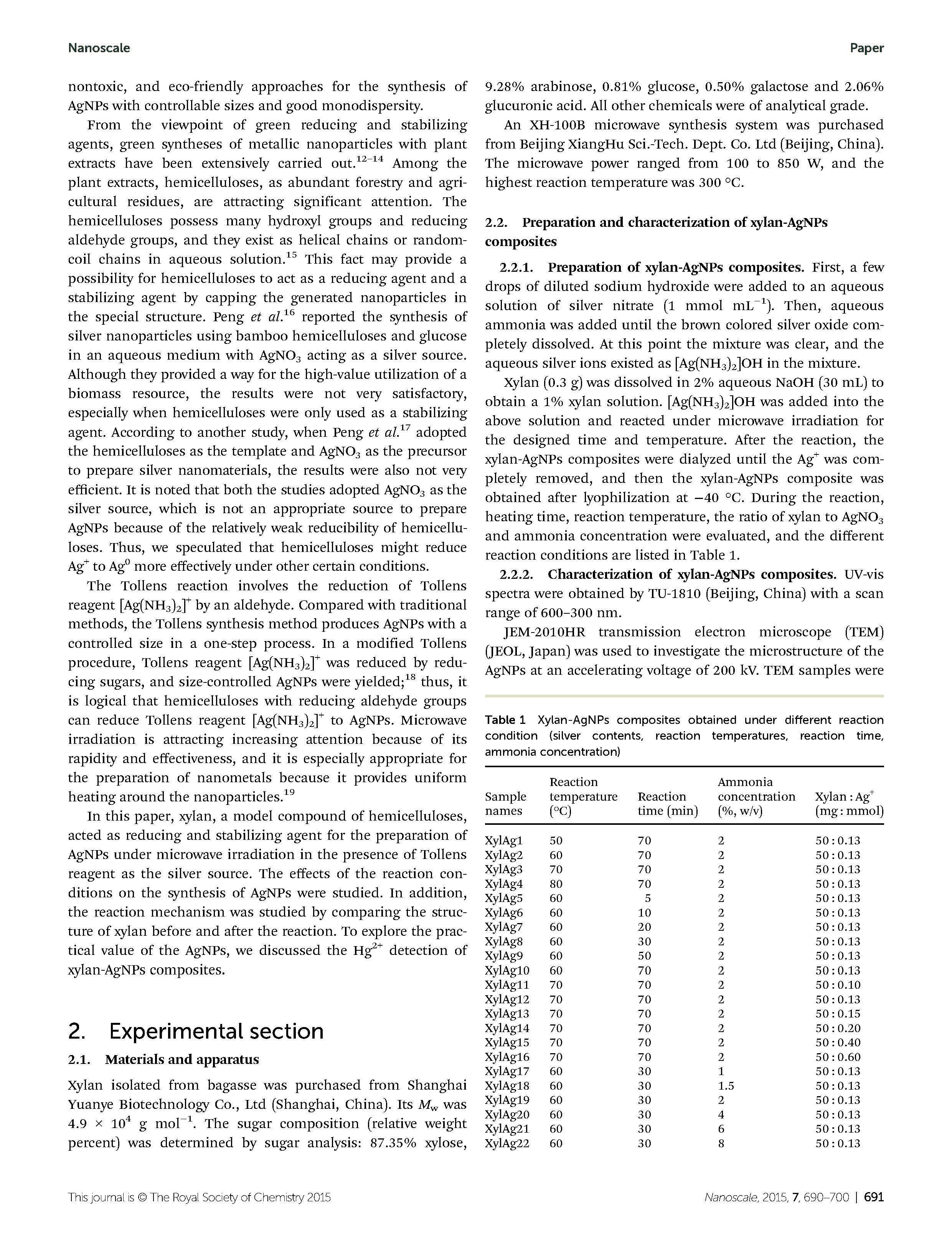
Fig.2/4↑
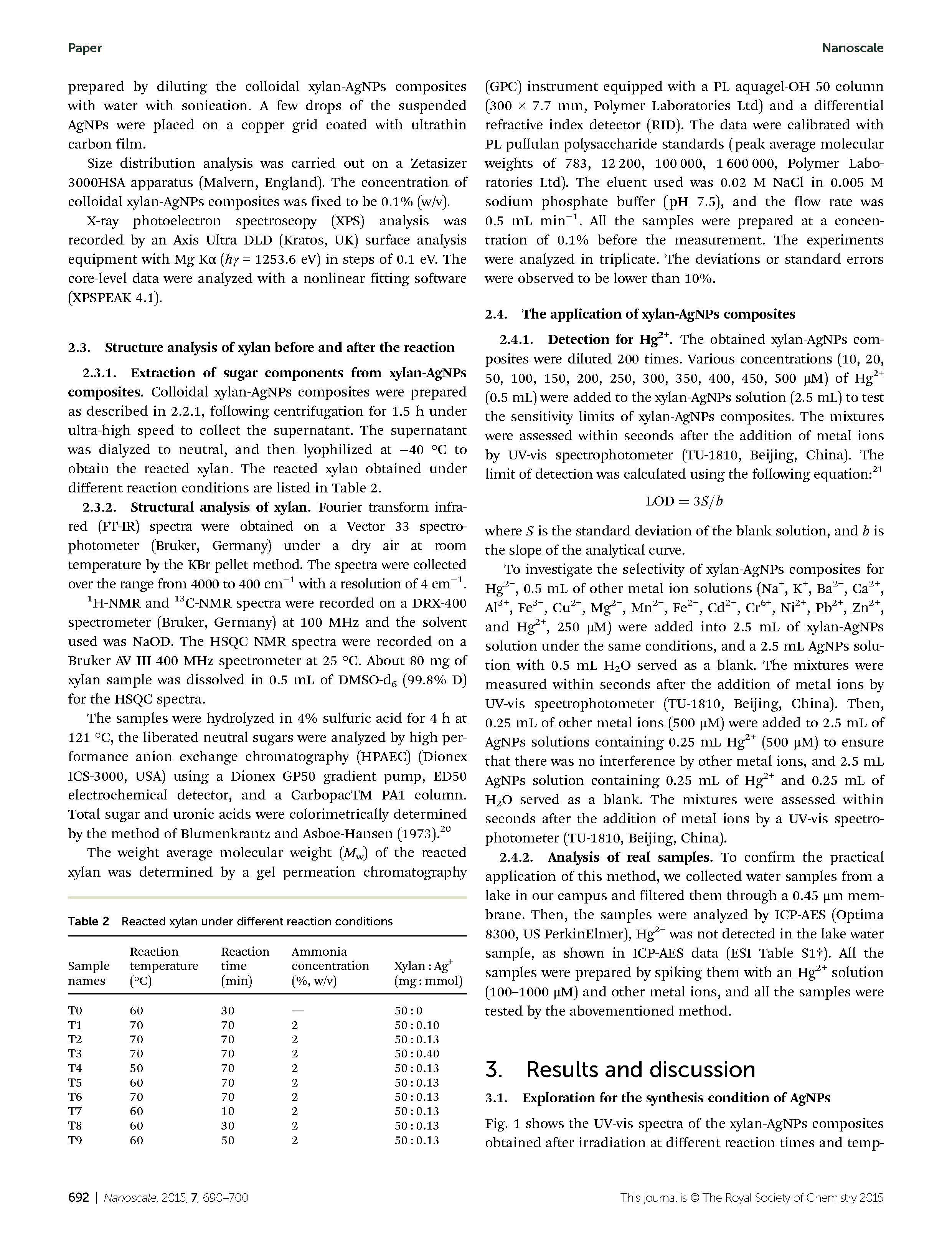
Fig.3/4↑
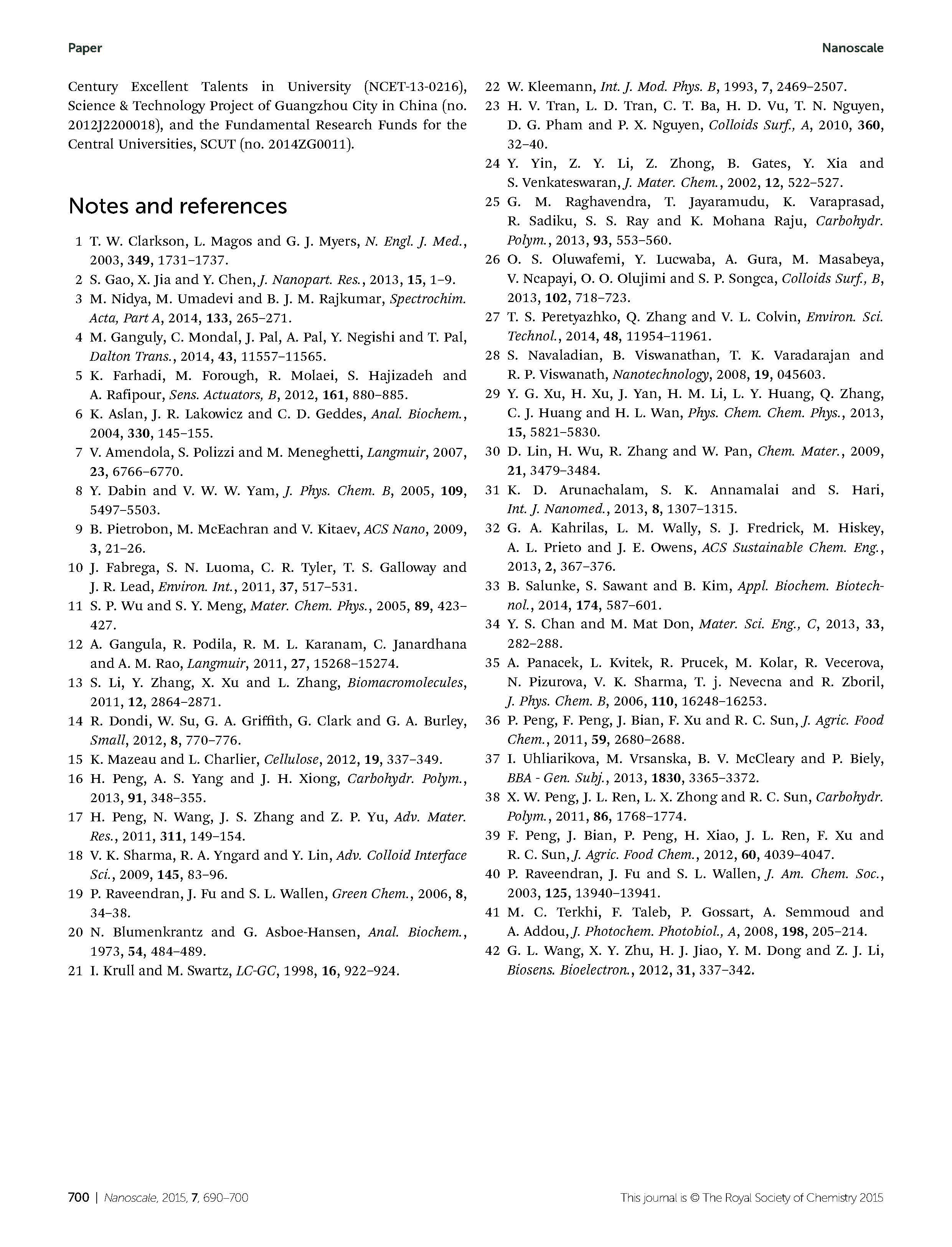
Fig.4/4↑
In this study, AgNPs were prepared in aqueous solutions of xylan under microwave irradiation using Tollens reagent as the silver source and xylan as a reducing and stabilizing agent. Different reaction conditions (microwave irradiation temperature, microwave power, microwave time, ammonia concentration and the mass ratio of xylan to AgNO3) induced AgNPs with different size. The prepared AgNPs with diameters of 20–35 nm were mostly spherical and capped by xylan. During the reaction, the reducing aldehyde groups in xylan may be oxidized to carbonyl groups, the side chain may be removed and there may be a slight hydrolysis of xylan. The prepared xylan-AgNPs composites can detect Hg2+ with high sensitivity and selectivity, which can provide a simple and fast approach for the detection of Hg2+ in environmental water.
An XH-100B microwave synthesis system was purchased from Beijing XiangHu Sci.-Tech. Dept. Co. Ltd (Beijing, China). The microwave power ranged from 100 to 850 W, and the highest reaction temperature was 300 °C.








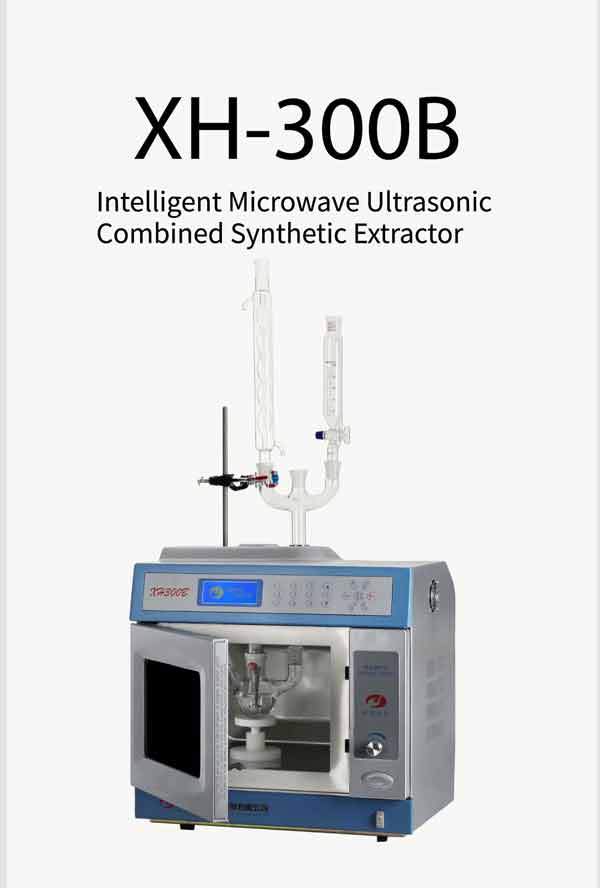

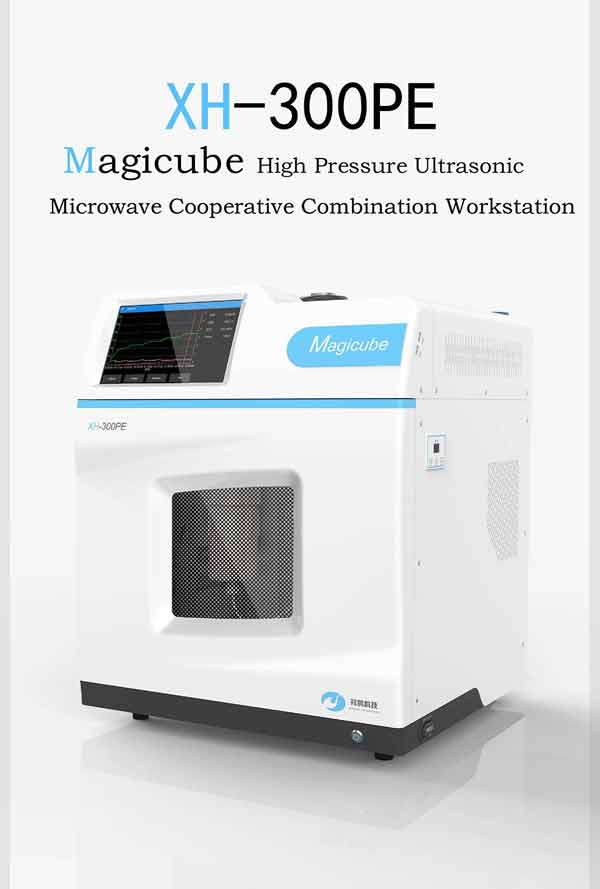
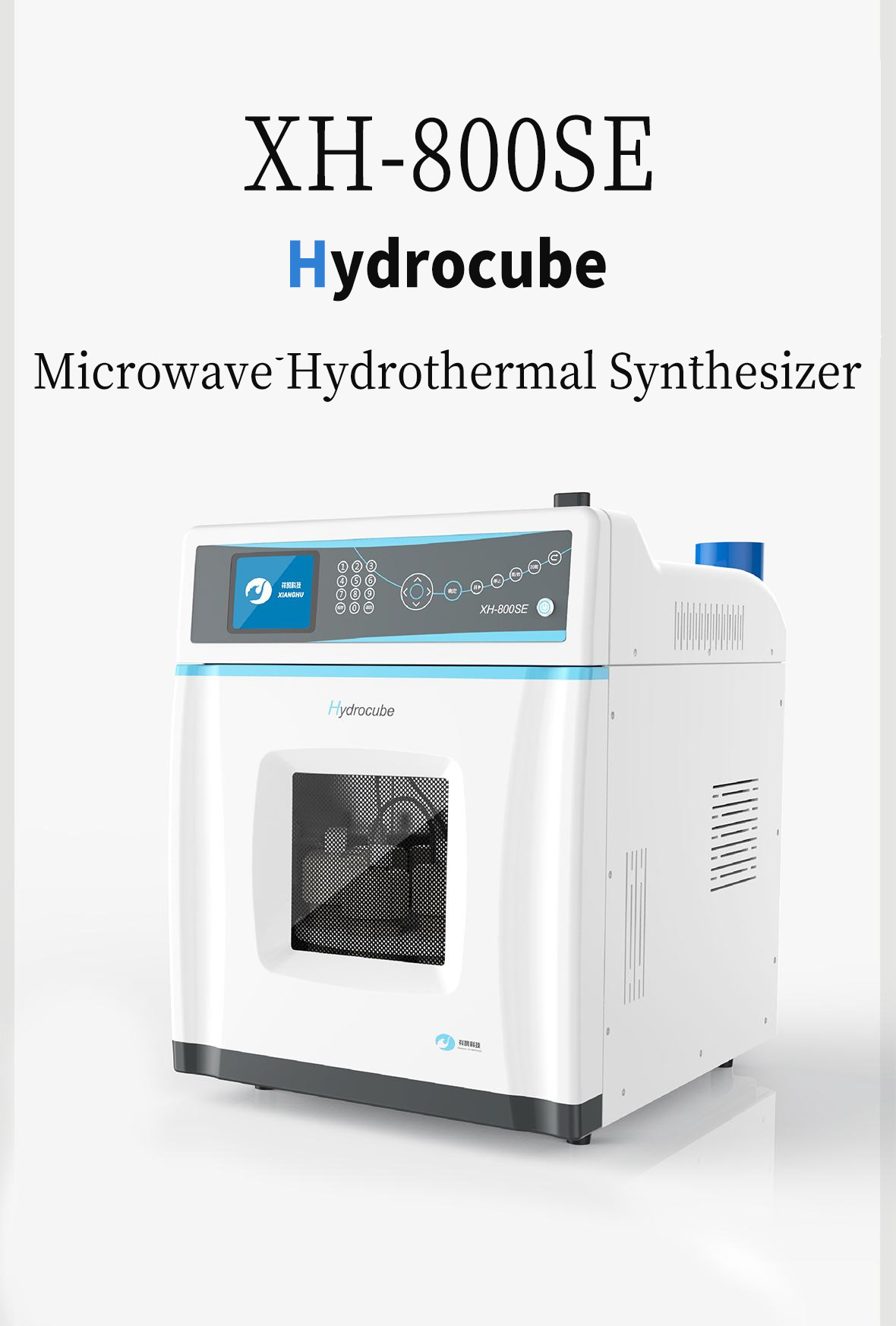
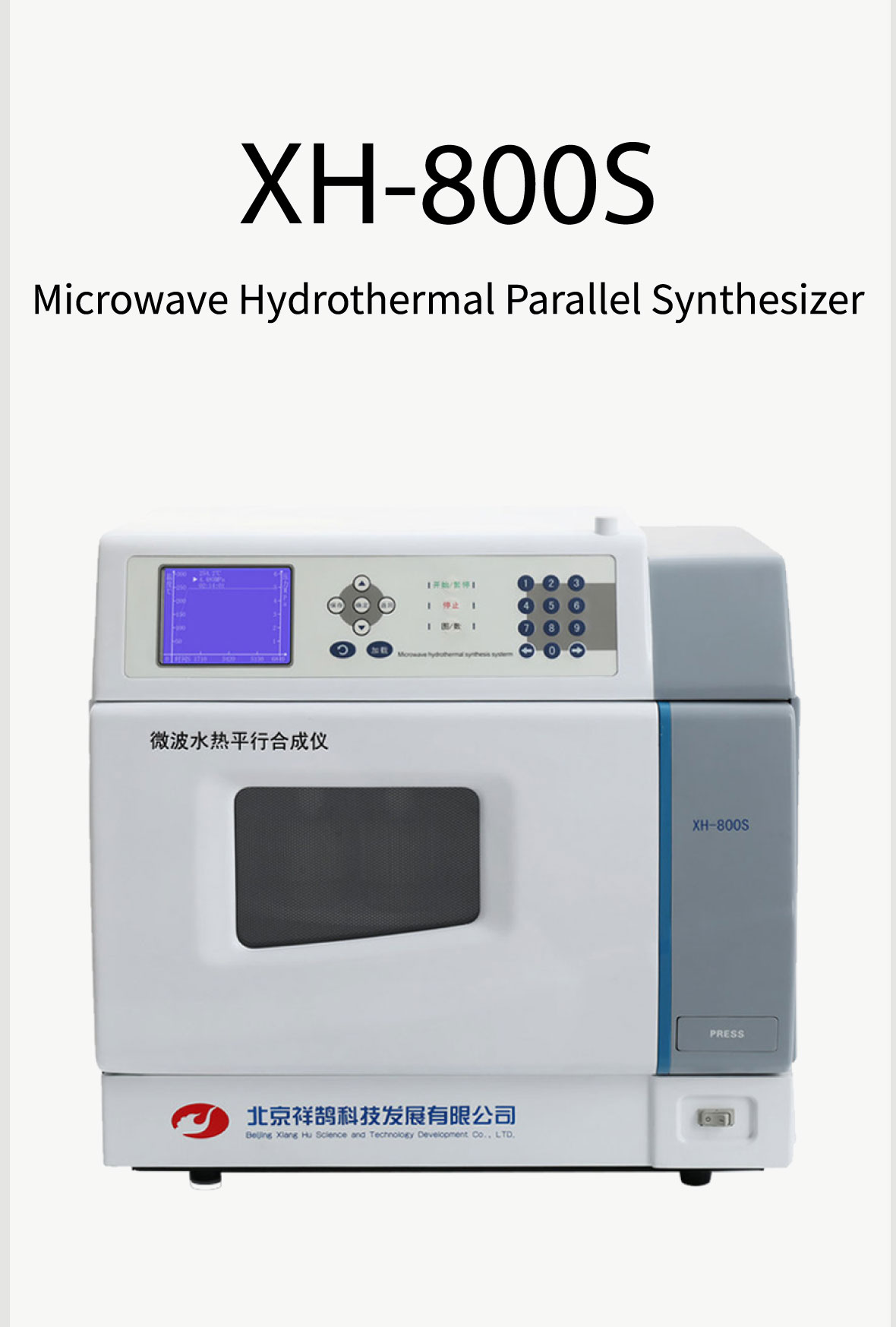
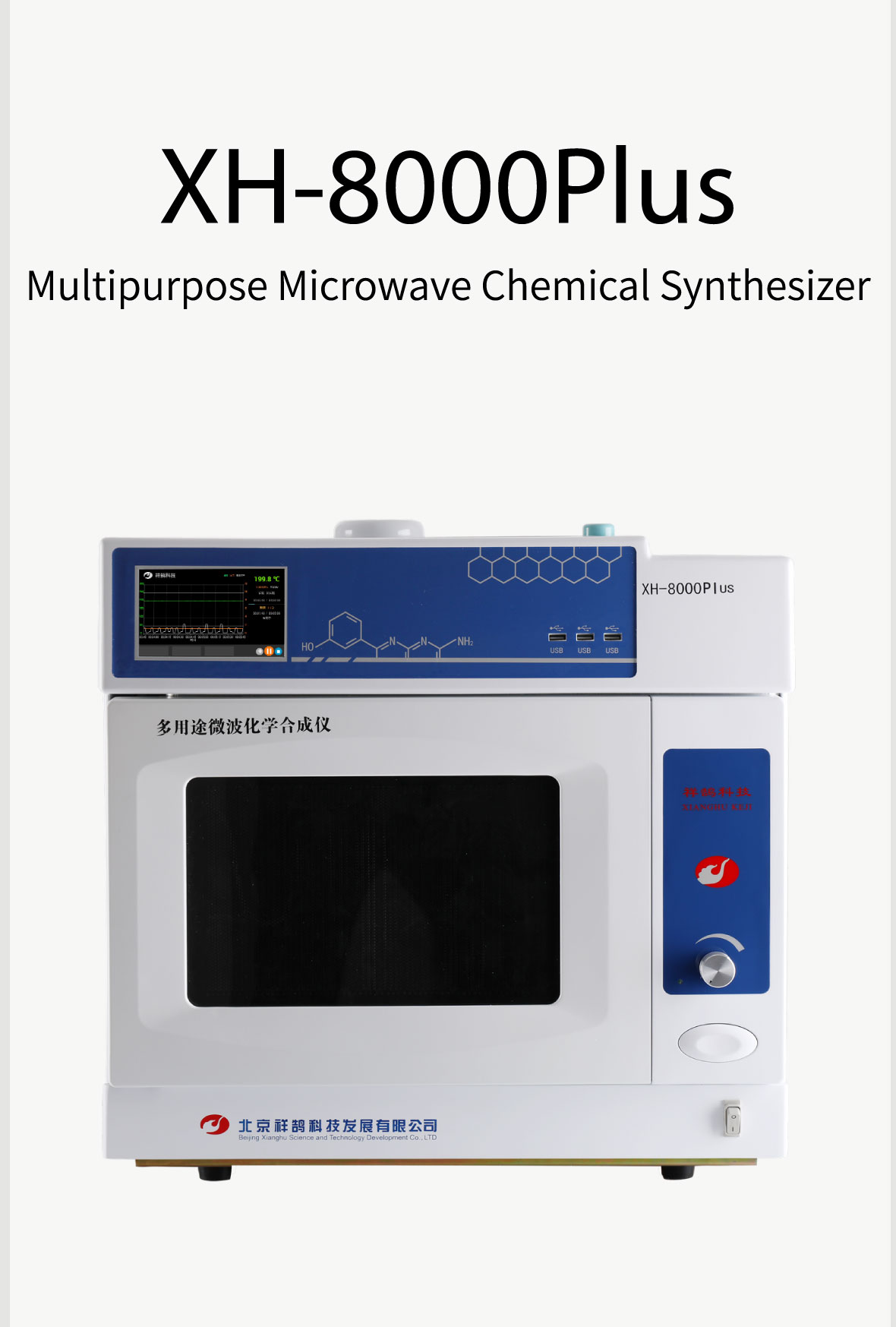
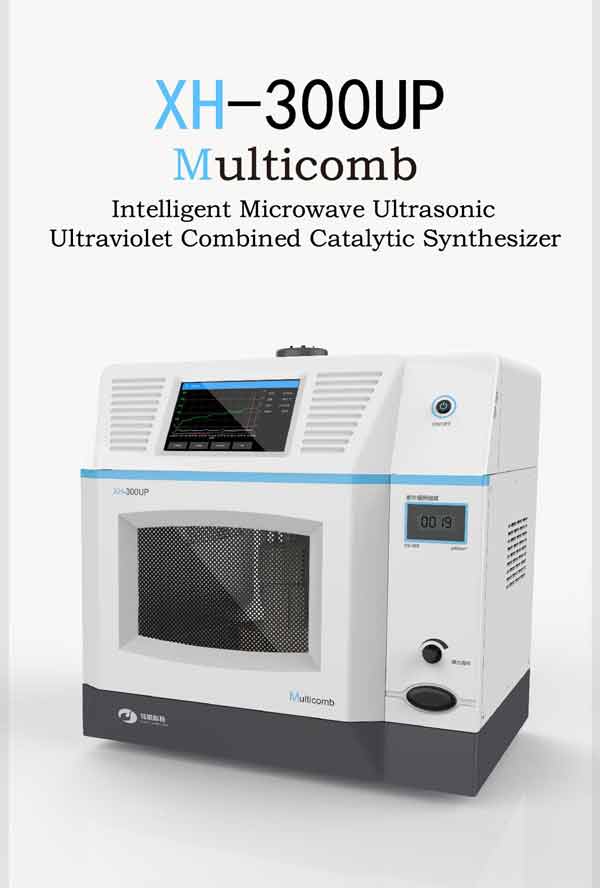
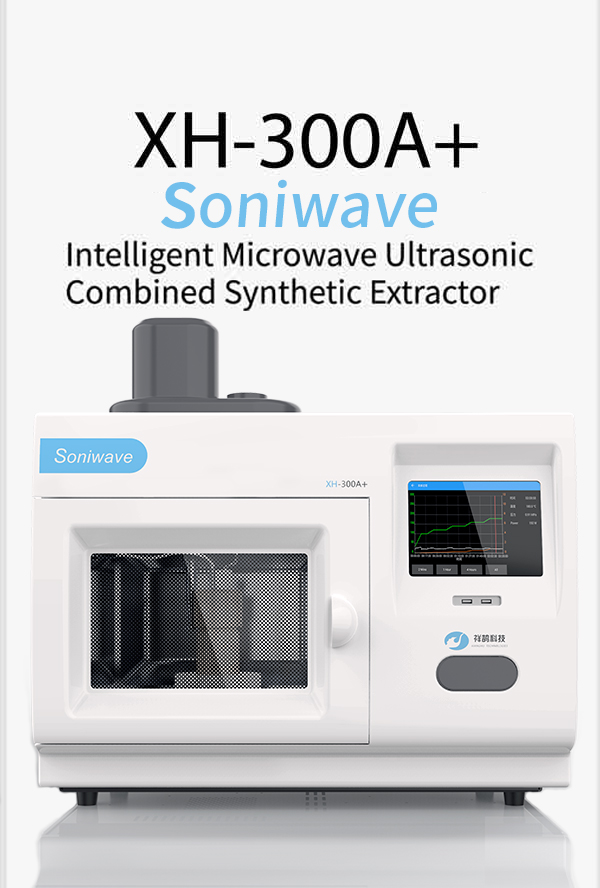

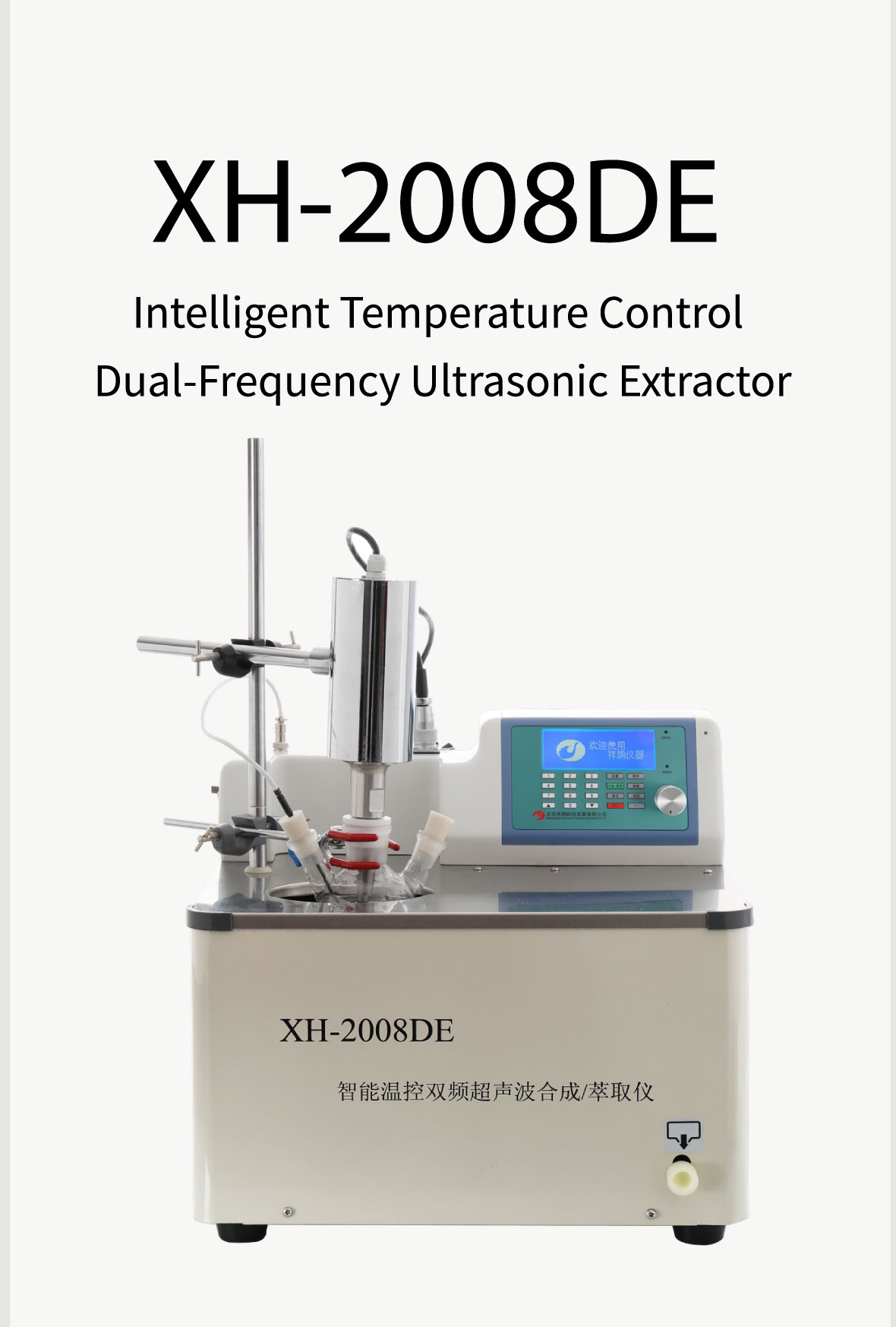



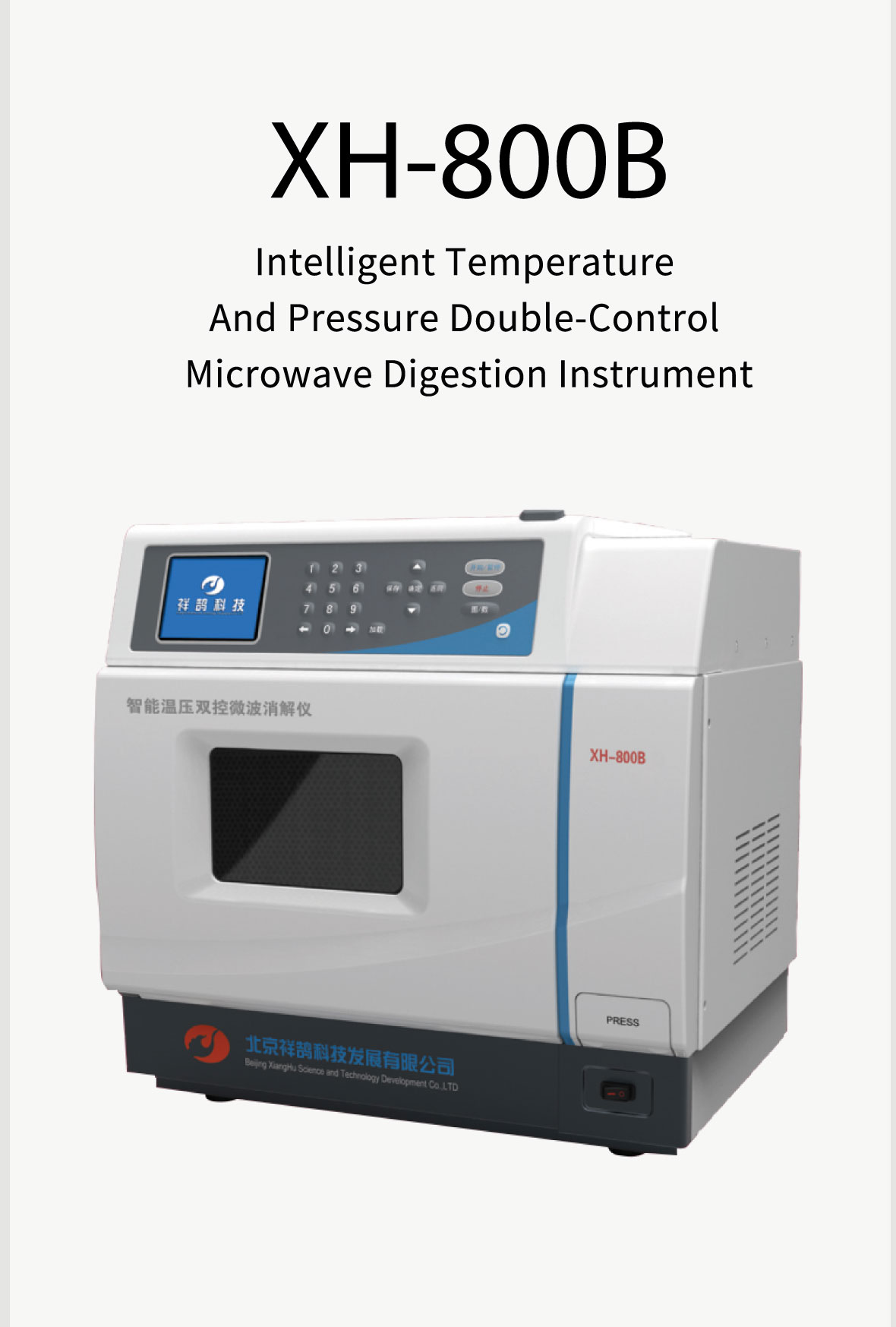

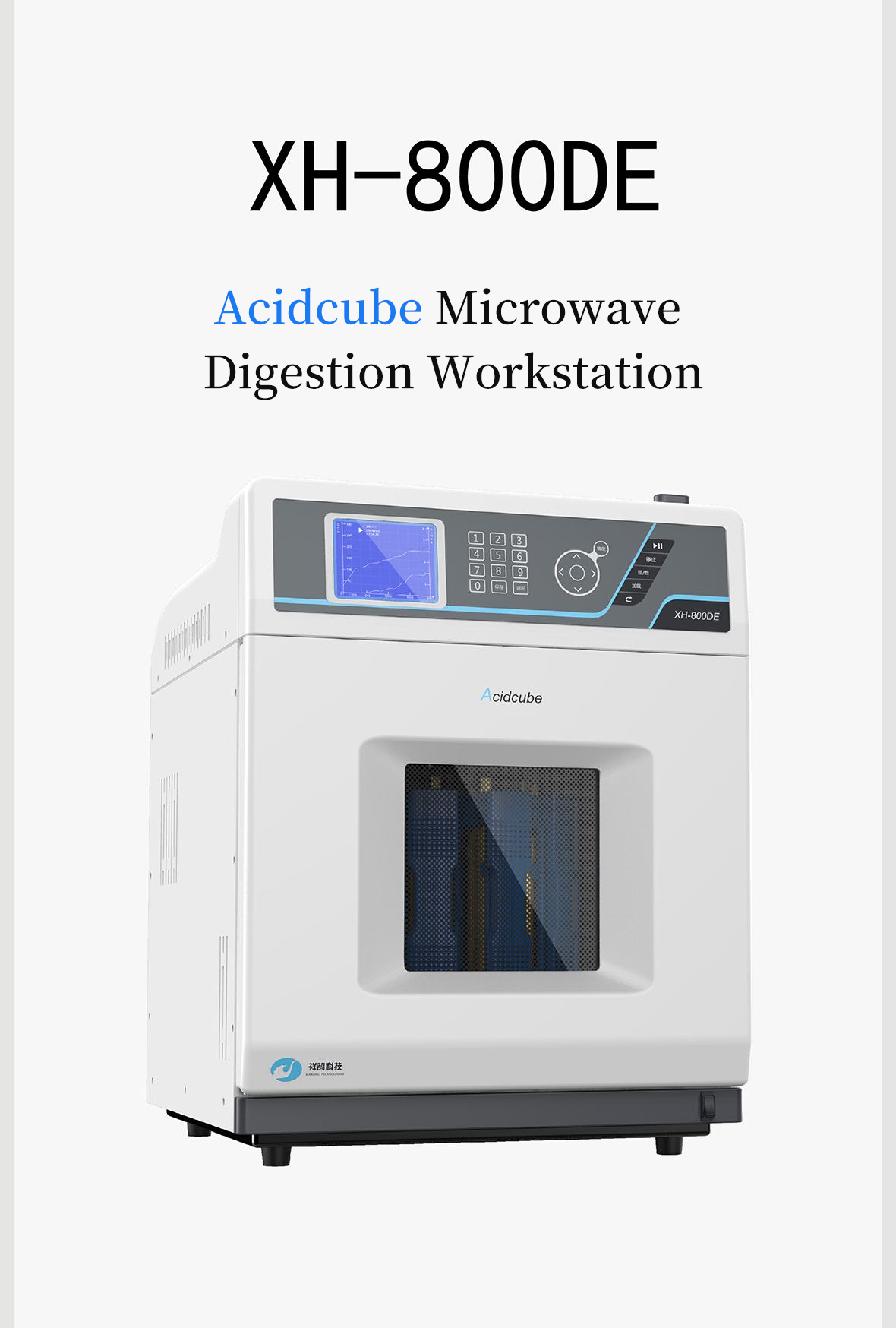

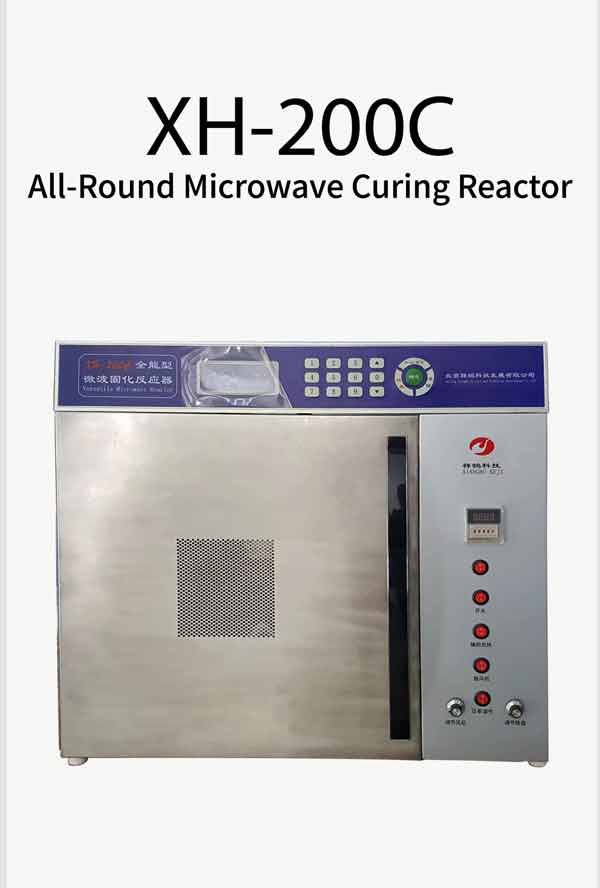
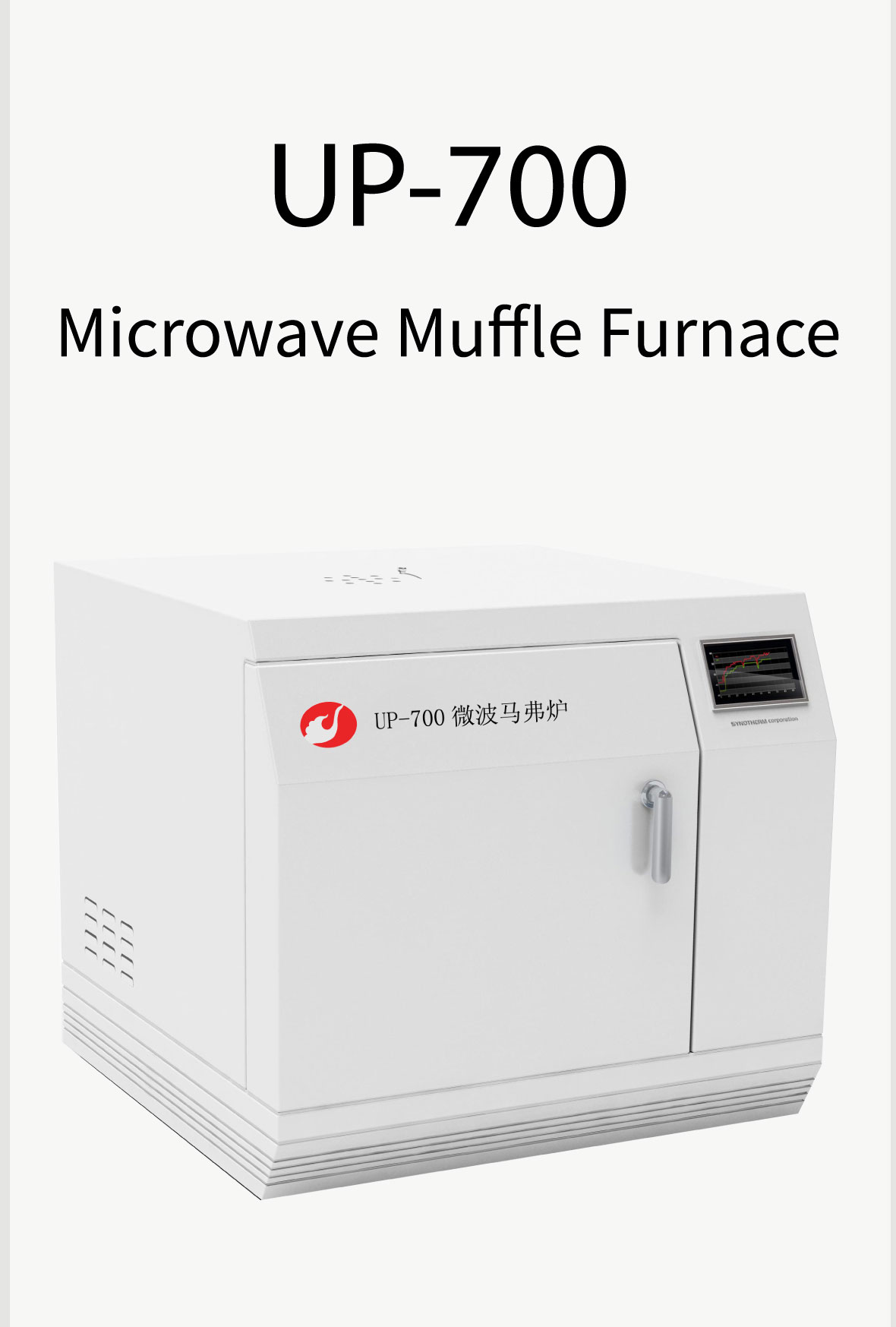

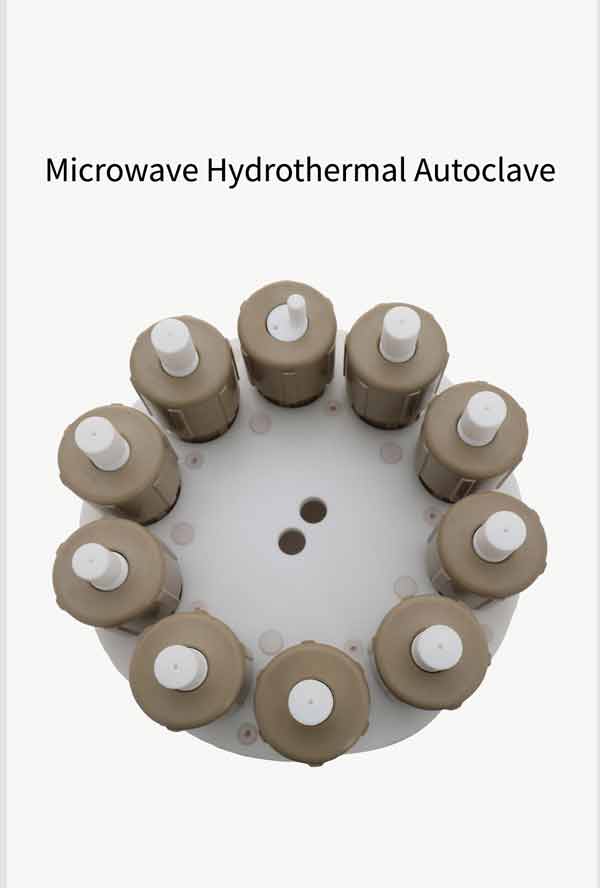




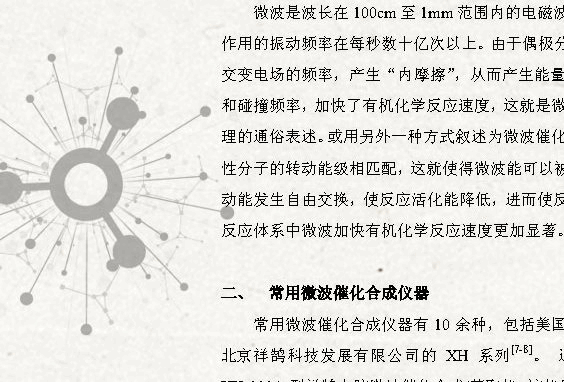

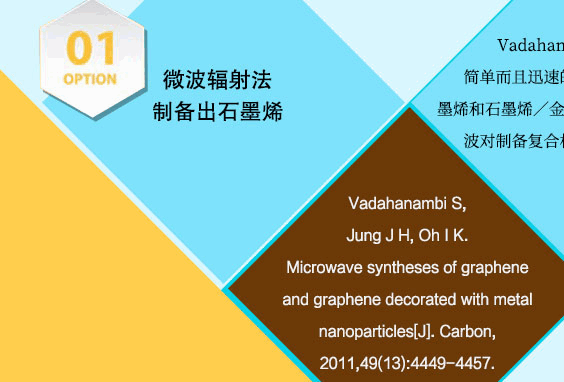
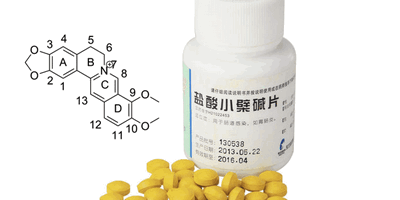


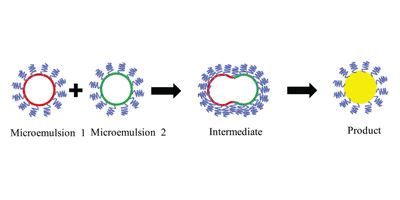
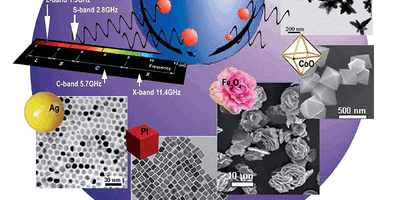
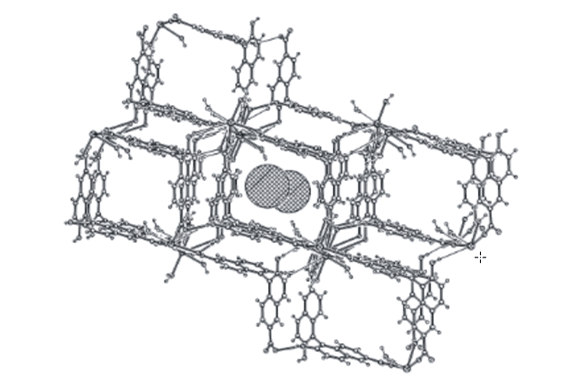
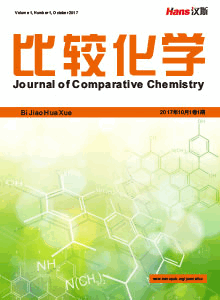
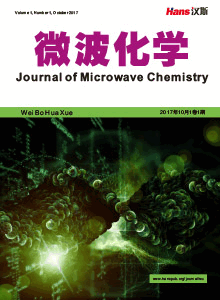





 京ICP备15050585号
京ICP备15050585号

